Traveling on an Amazon River ferry from Manaus to Santarém is a unique experience.
It is 31 hours of slow boat travel on the world’s 2nd longest river and along its largest rainforest.
But it is not for the weary traveler.
There are close to zero luxuries afforded on the Amazon River ferry. Passengers sleep in hammocks on deck and there is little personal space between them.
Locals are the ferry’s primary customers, using them to get from one river town to the next.
The ferry doesn’t offer guided excursions, gourmet meals, or air conditioning. But it does provide a different glimpse into life near the Amazon River and 450 miles of unobstructed views of the Amazon Rainforest.
If you plan to travel between Manuas and Santarem, the ferry is an adventurous option compared to a boring, quick flight.
Continue reading to learn about the different ferry options, how to buy tickets, and what to expect on the ferry from Manaus to Santarém.
Choosing a river ferry from Manaus to Santarém
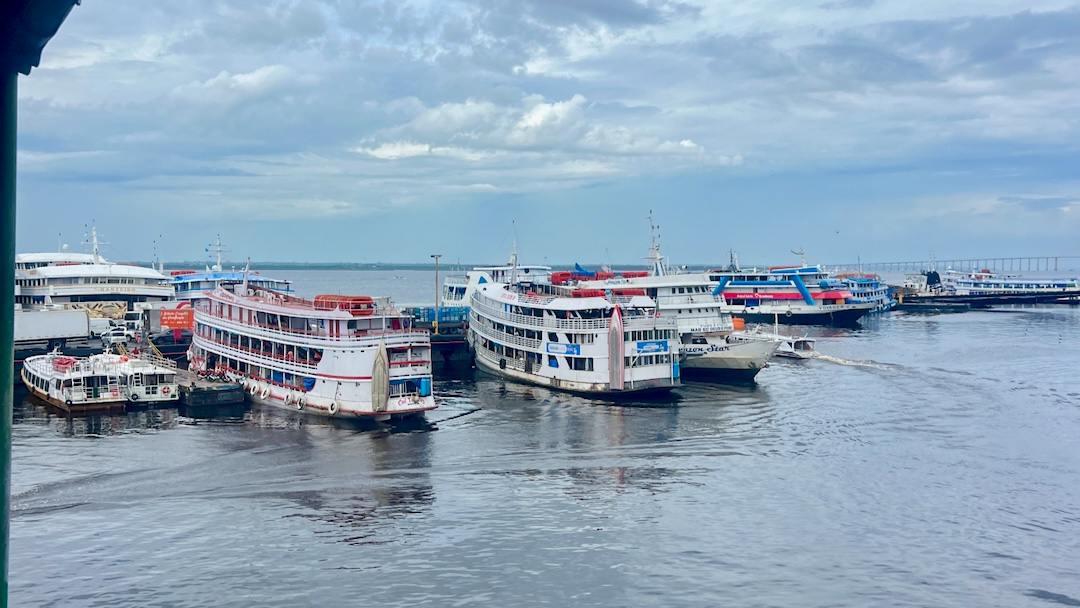
Two common ferry options between Manaus and Santarém are what I refer to as the slow ferry or the fast ferry.
Slow Ferry
Our preferred choice, the slow ferries are large boats that cruise for 31 to 36 hours on the Amazon River between Manaus and Santarém.
There are several port calls along the way, and the ships are often delayed arriving to Santarém. Travelers sleep in hammocks on deck or in reserved cabins.
Prices for the slow ferry average around $200 BRL or $35 USD (2024).
Fast Ferry
The fast ferries are smaller boats and the journey time is around 15 hours. Travelers sit in seats instead of hammocks.
Prices for the fast ferry are higher, the average ticket costs $450 BRL or $80 USD (2024).
How to purchase Amazon River ferry tickets in advance
This was an early challenge in planning our ferry transit from Manaus to Santarém.
No matter how many blogs I read or YouTube videos I watched, none provided a clear answer to choosing a ferry boat and buying tickets in advance.
The most common suggestion was to purchase tickets in person at the port, either the day before or the day of the trip.
This plan didn’t work for us. We would be returning to Manaus, from our stay at the amazing Dolphin Lodge, just 1 day before the morning ferry departure.
Risking a sold-out ferry or a closed sales office wasn’t an option. I wanted our ferry tickets in hand before going to the Dolphin Lodge.
Ultimately, in the comments of a YouTube video, I found the travel company Yjara Viagens.
On Yjara Viagens’ website, it is easy to view the different ferries, travel times, and prices based on the destination and date.

We booked two hammock (rede in Portuguese) spots on the FB Golfinho do Norte ferry boat from Manaus to Santarém. Each ticket cost $200 BRL. We received a WhatsApp confirmation with PDF tickets.
Through Yjara’s website, it isn’t possible to reserve a cabin. I recommend sending a WhatsApp message to Yjara to inquire about cabin reservations. Our ferry only had 10 cabins on board.
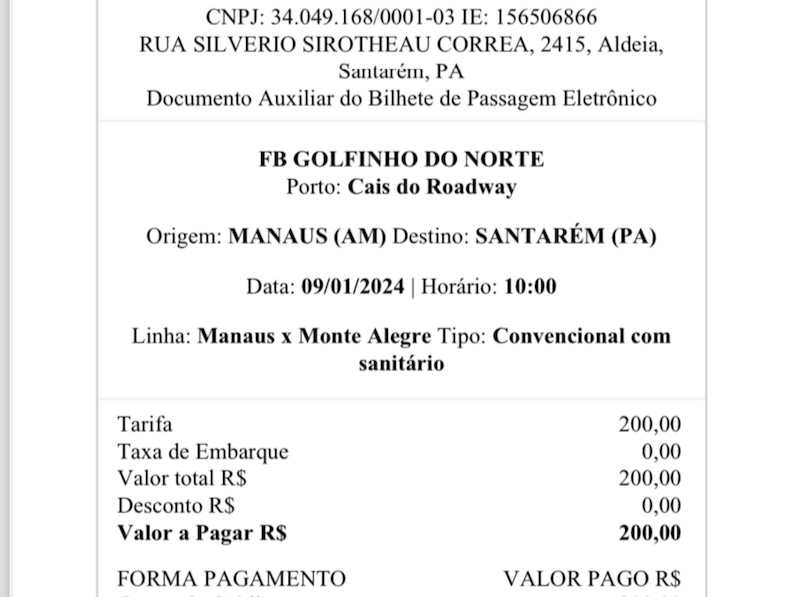
The morning of the Amazon River ferry departure
Yjara Viagens recommends travelers arrive at the port at least 2 hours before departure. On the morning of the ferry departure, there are a few things travelers need to do before boarding.
Pay the port tax for the Amazon River ferry
The most important is to pay the port tax.
On the morning of the ferry departure, travelers pay a $5 BRL port tax. The tax is paid at the “Agencia de Passagens” counter.
It is located on the left when walking inside the port building. Look for orange and black signage.
Passengers need to show an ID (passport) and ferry tickets. The line was very long on the morning of our ferry and took about 30 minutes.
Travelers can’t pass through the port building to the docks without the tax receipt.
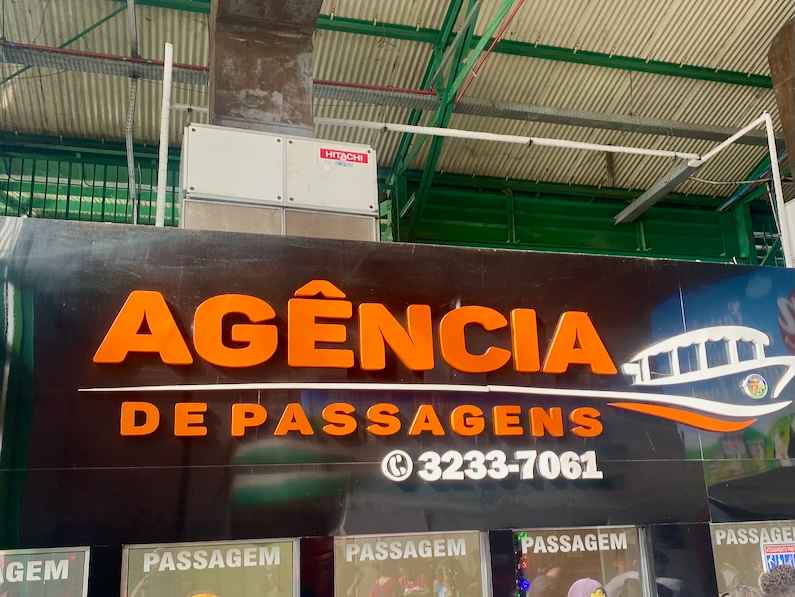
Last minute purchases before Amazon River ferry
Several stores around the port sell anything you think you might need and more.
If you don’t have a hammock or rope, buy it before getting on the ferry. The ferry does not provide hammocks to passengers. Rope to hang hammocks was sold on our ferry by outside vendors.
Buy any last-minute items like water or snacks. There are snacks like chips and candy, water, beer, and sodas for purchase on the ferry.
Our ferry sold out of many popular items like to-go sandwiches, coconut water, and cokes after 24 hours. Drinking water was always available for purchase.
Check-in on the Amazon River ferry
Before finding a place to hang your hammock, passengers must check in with the boat crew. The crew will have a clipboard with all passenger names that is cross-checked with an ID.

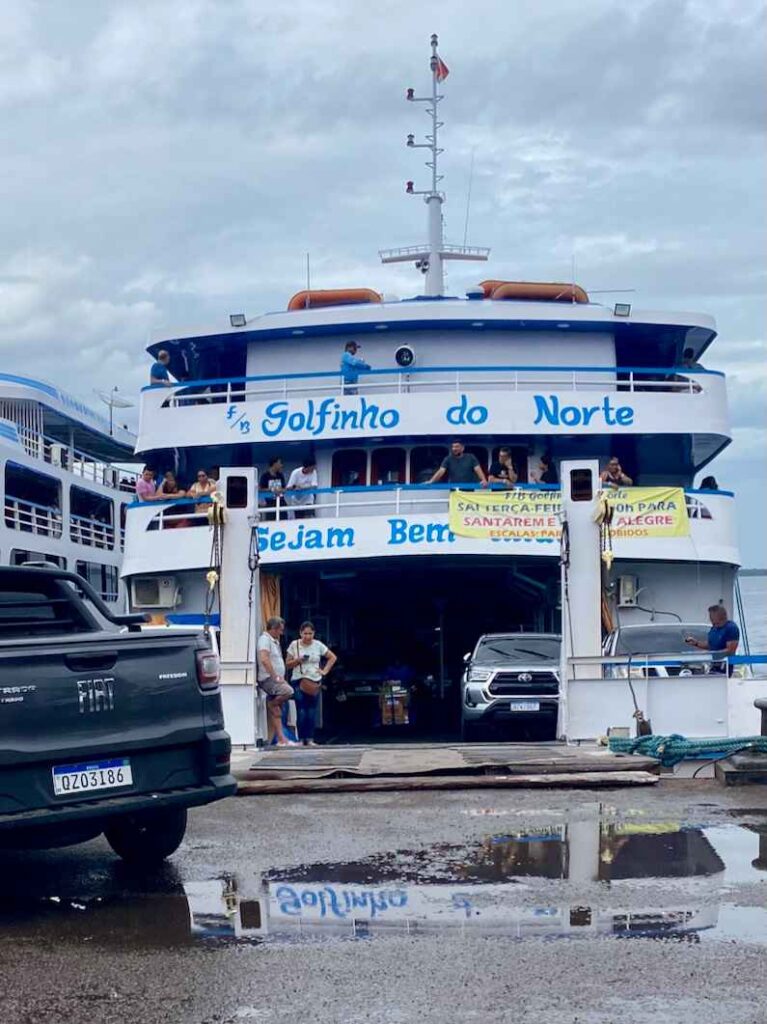
Finding a hammock spot on the ferry
Hammock spots on the ferry are not assigned and are first-come first-serve.
Don’t be surprised if when you get on the ferry, it seems like every spot is already taken.
When we boarded the ferry boat around 9:30 am for an 11 am departure, there wasn’t a single hammock spot visible on any of the 3 main passenger decks.
The ferry seemed more than just sold out; it had to be overbooked.
Luckily we weren’t alone. Other passengers were without spots too.
We were instructed to wait on the lowest deck, where cars and cargo are stored, while the crew cleared space for us to hang our hammocks. Once the space was cleared, it was a race to claim hooks and hang hammocks.
This was a stressful aspect of the morning. We thought we had done everything right, tickets in hand, arriving earlier than necessary, only to be without a spot on one of the main passenger decks.
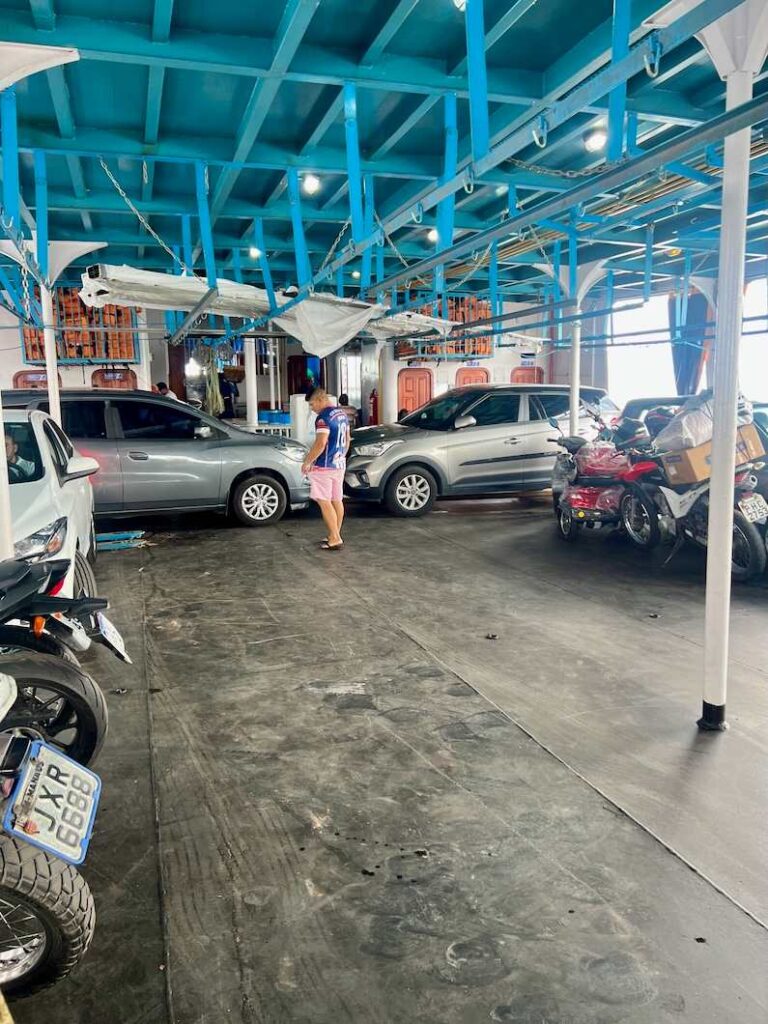
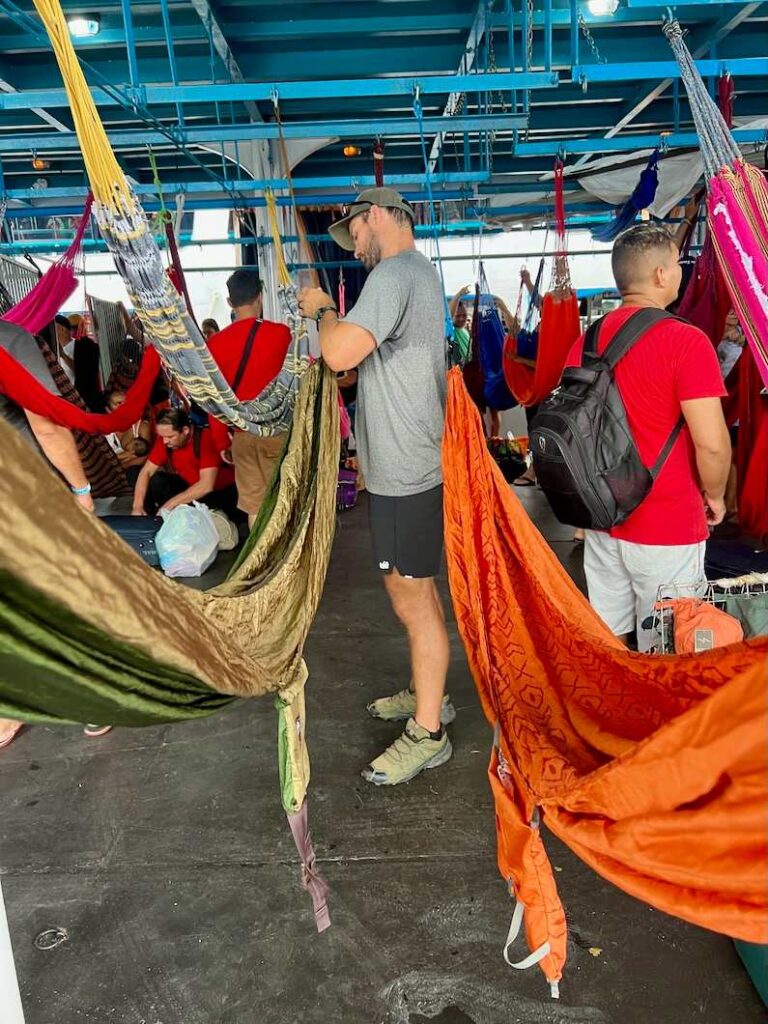
If you want to avoid some of this stress, try to arrive as early as possible.
However, I believe many of the best hammock spots were taken by passengers already on the boat.
Meaning they boarded at previous ports. So we never would have had a chance to get a better hammock location even if we had been there when the ship arrived.
What to expect on the Amazon River ferry
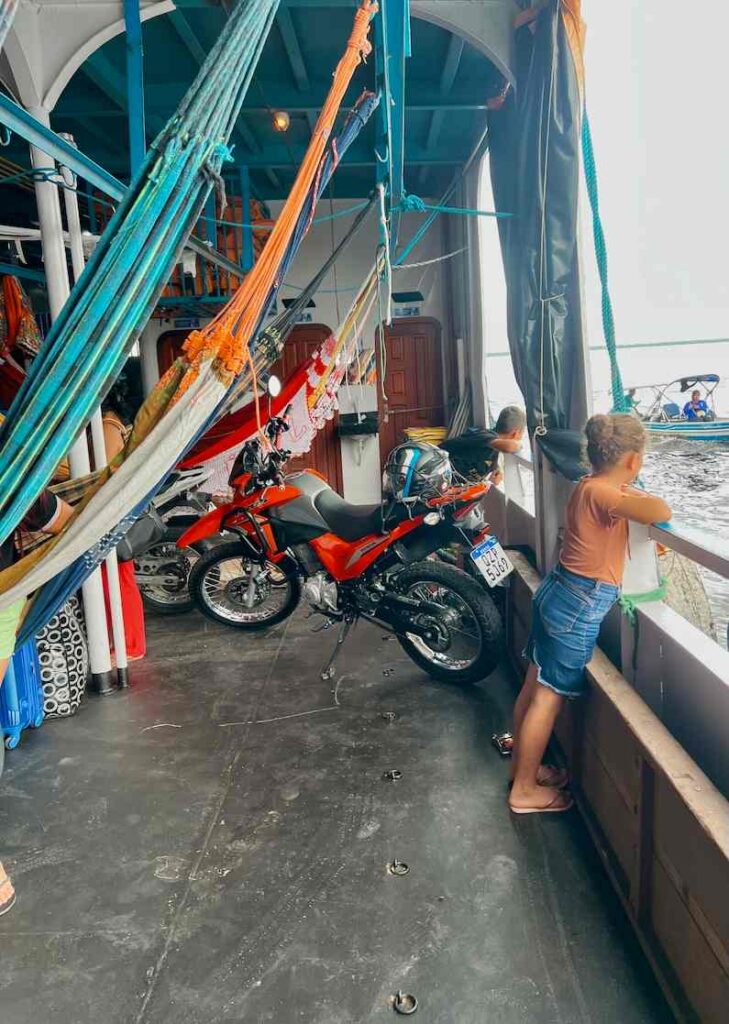
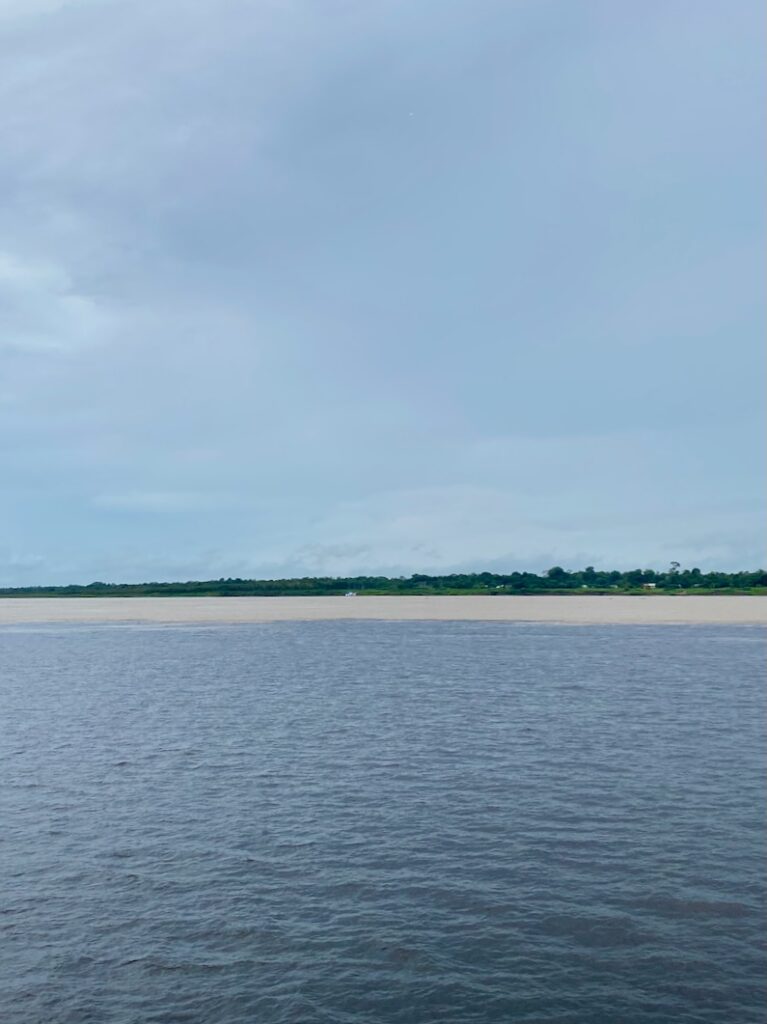
Food on the Amazon River ferry
Cafeteria
A small cafeteria on the ferry serves a breakfast, lunch, and dinner buffet.
On our ferry, the cafeteria operating hours were posted on the door but not strictly enforced.
For example, dinner was from 5 pm to 6 pm but we ate at 6:30 pm. The buffet is priced by weight. Passengers can eat in the cafeteria or use a to-go box to eat elsewhere on the ferry.
The dinner buffet was simple but included rice, beans, pasta, salad, beef, fish, and chicken.
Breakfast was served VERY early, around 5:30 am.
Lunch was served at 11 am. We attempted to get lunch but the line to enter the cafeteria wrapped around the entire deck and never seemed to get shorter. We opted for snacks from the top deck bar.
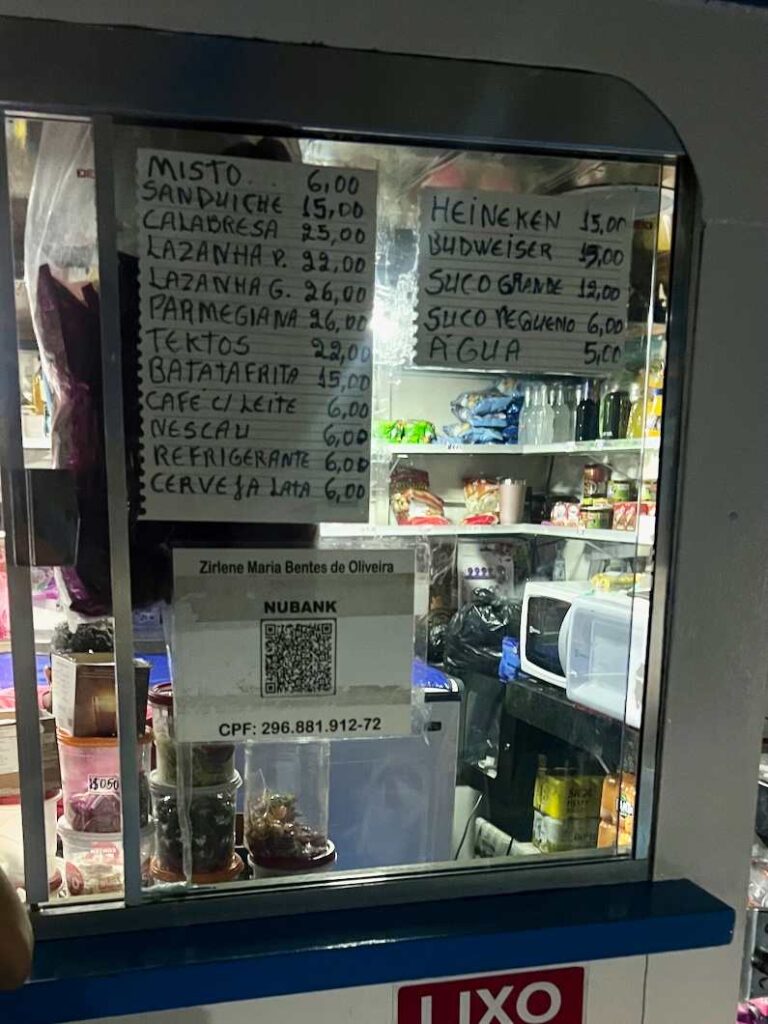
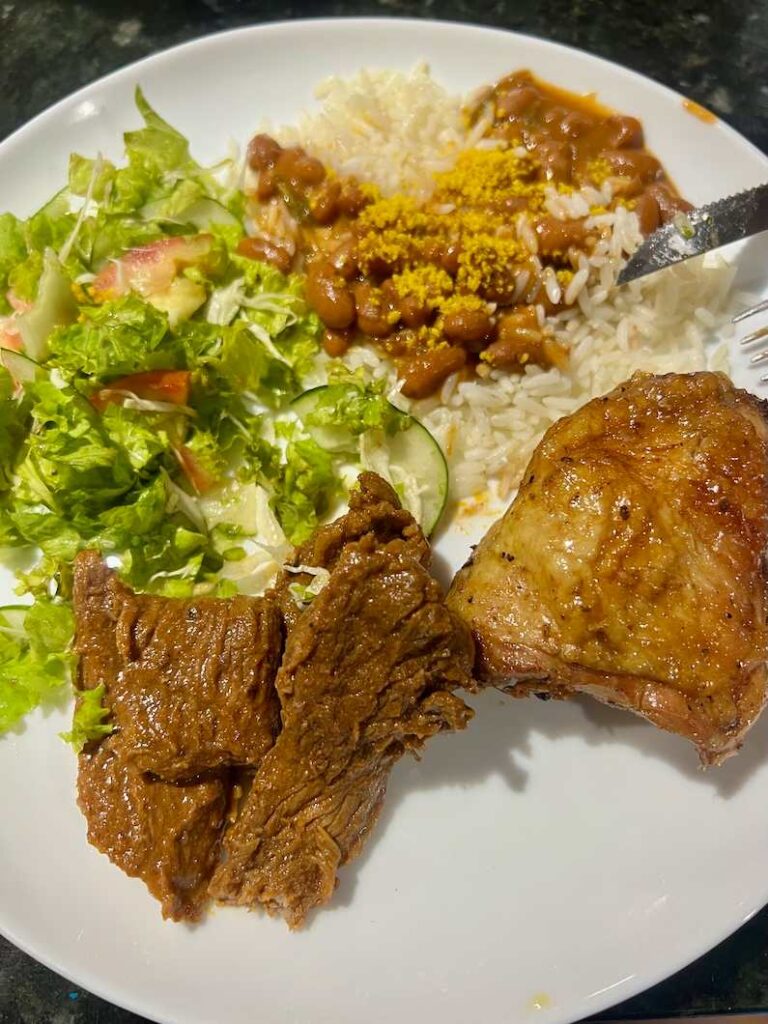
Snack bar
A snack bar with a dozen plastic tables and chairs is on the top deck. Not sure if it is the norm on other ferries, but on ours the music coming from the top deck was painfully loud.
Unfortunately, it was not enjoyable to sit there, even though it was one of the few places on the ferry with seating other than your hammock.
Food vendors
At each stop, vendors station themselves on the docks and use long poles with baskets to sell sandwiches and fruit to the different levels of the ferry.
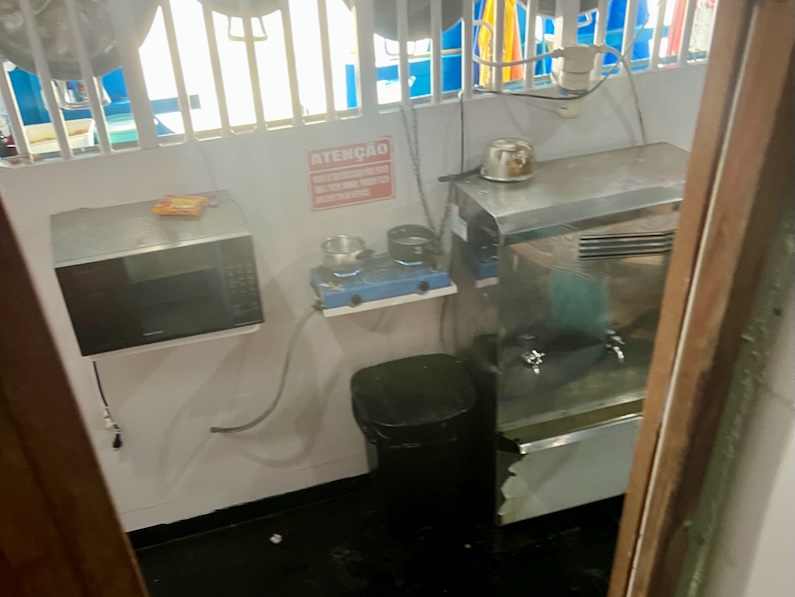
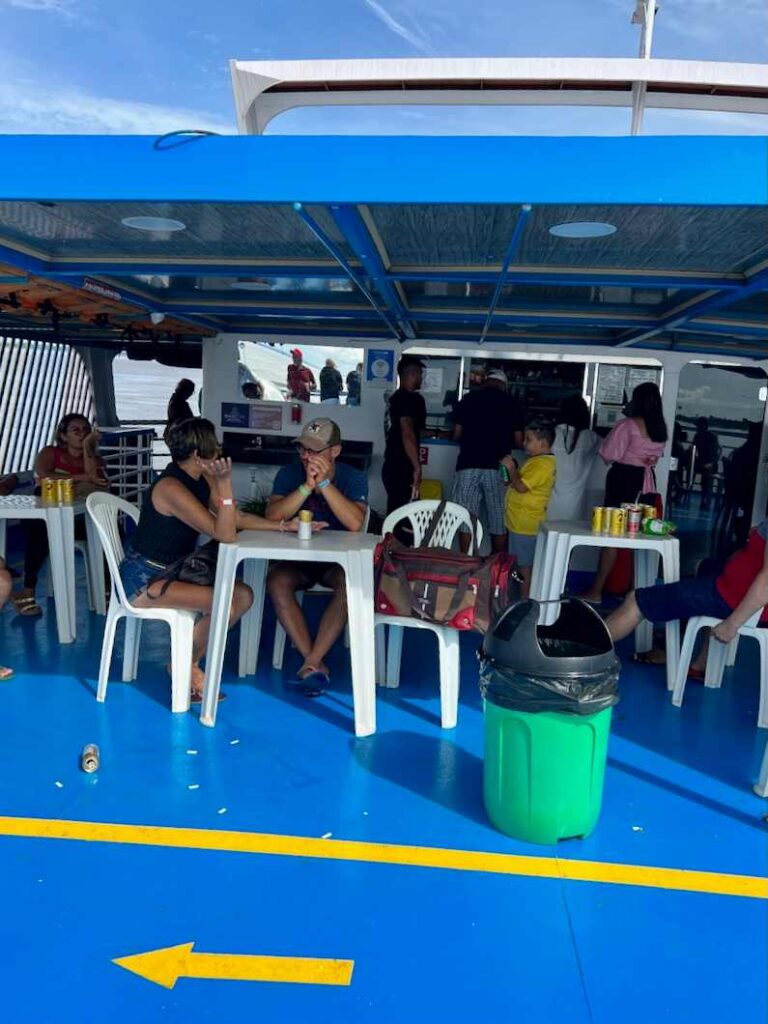
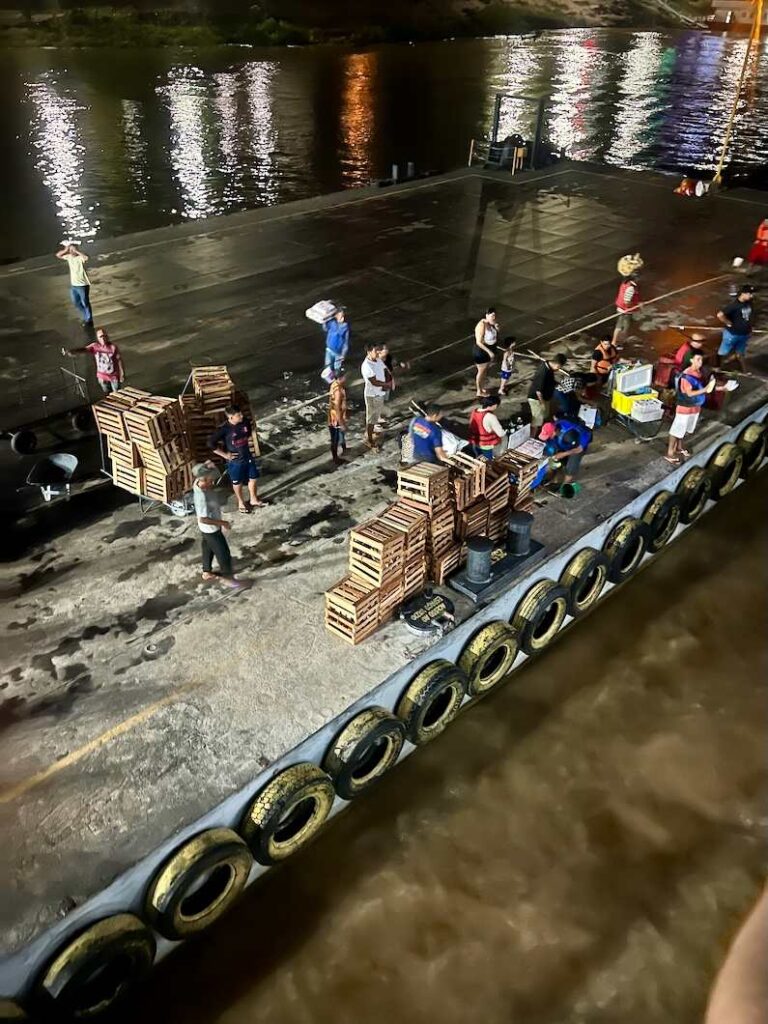
Bathroom and showers on the ferry
Each deck of the ferry has several restrooms. Cold water showers are in the same stalls as the bathroom. Passengers will want to bring shower shoes like Havaianas to use in the showers.
Soap is provided at the sinks. Bring hand sanitizer just in case.
Hanging out and sleeping in the ferry
Passengers spend most of their time lounging in their hammocks during the 31-hour ferry.
This is why it is important to try to get the best hammock spot possible.
Overall, we were satisfied with our hammock spots on the cargo deck.
We were on the “outside row”, close to the railing and water. Being on one of the “inside rows” would’ve been a little cramped feeling and stuffy.
The cargo deck is not without its downsides though.
- You are very close to the engine and it is LOUD. Try to get a spot as far away from it as possible.
- The windows don’t have glass. This makes the deck extra airy and breezy, if rain comes the crew will need to act fast to pull down the canvas covers.
- You might be near noisy animal cargo like chickens and roosters.
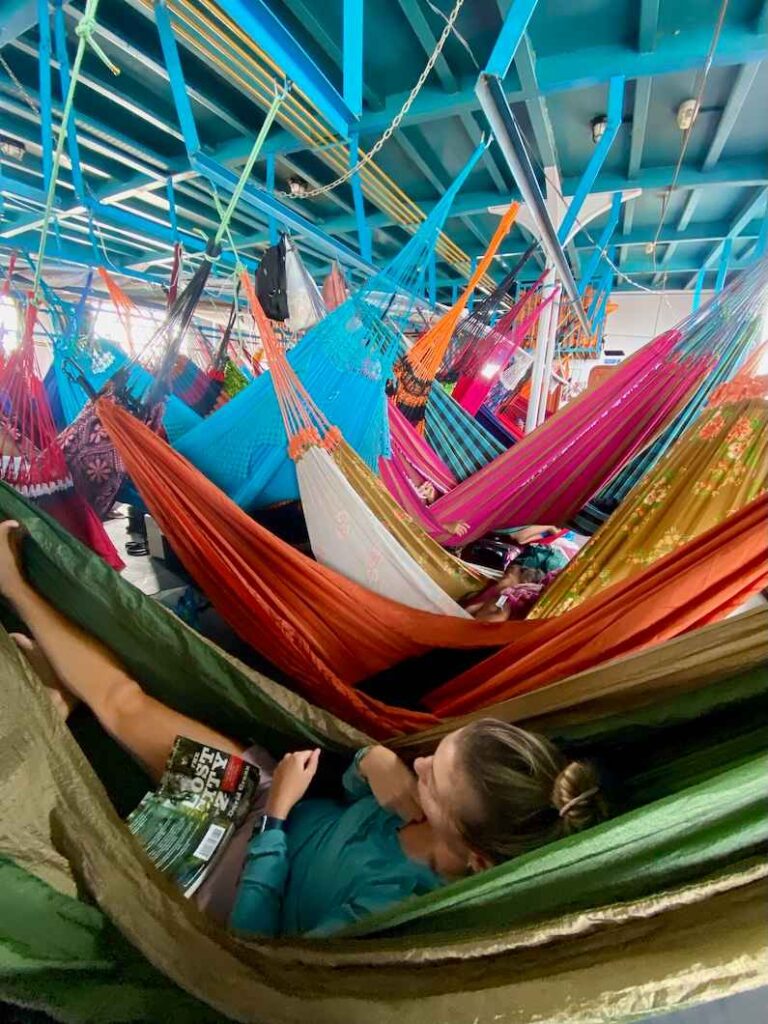
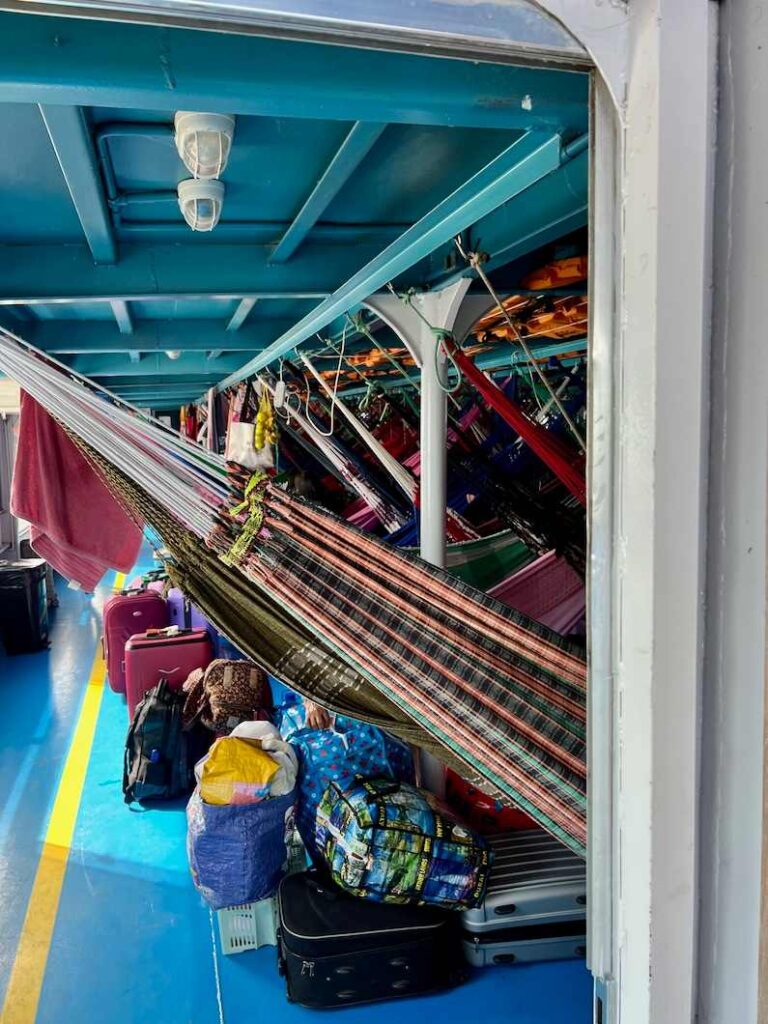
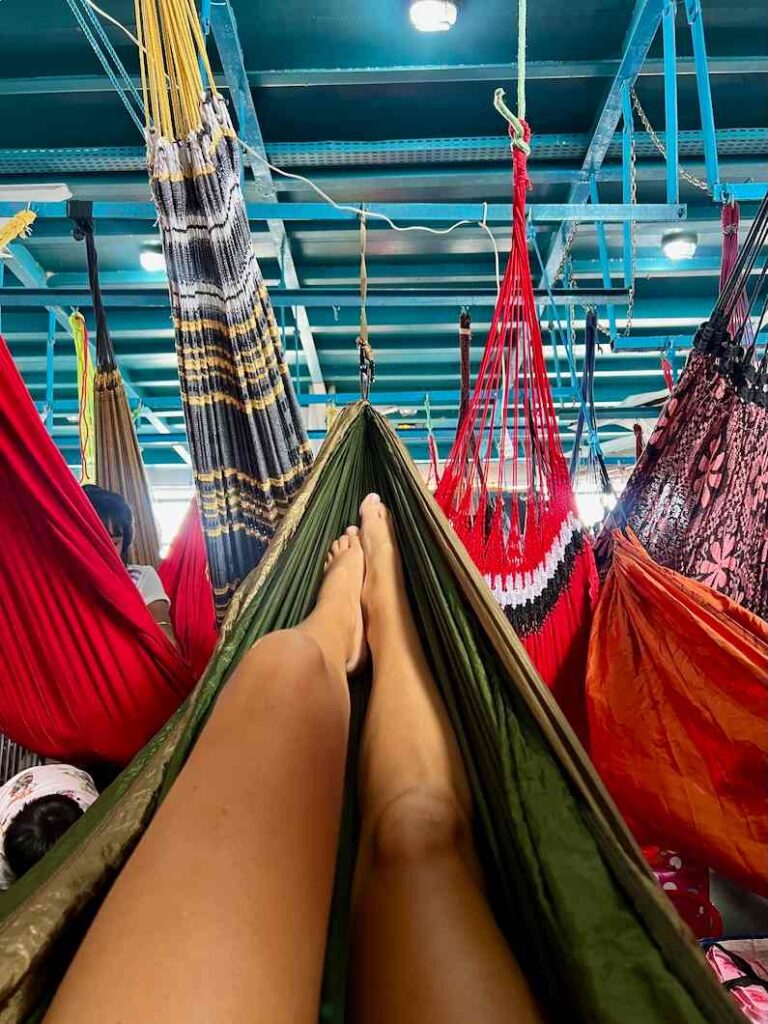
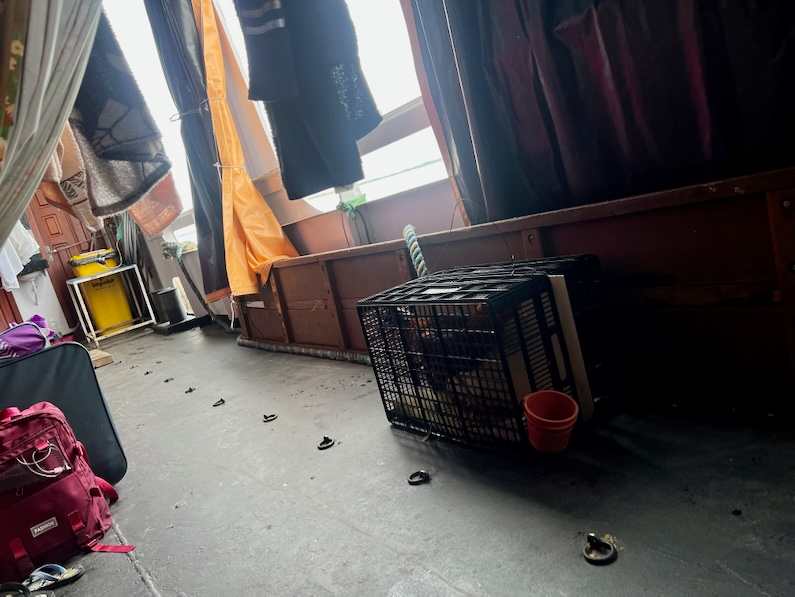
Sleeping in the hammock on the ferry felt like camping to me.
Around 10:30 pm, noise and foot traffic on the ferry calmed down significantly. The overhead lights on at night are a soft yellow and red, making it easier to sleep. I recommend bringing an eye mask though to help with light sensitivity.
Around 11:30 am a storm squall arrived. This is when being on the cargo deck is not ideal as the passengers struggled to close the canvas window covers until the crew could lock them down.
Quite a bit of rain got into the ferry and everything on the ground was soaked.
I recommend hanging your bags from the metal beams above the hammocks with a carabiner to avoid storing them on the ground. It is more sanitary and safe from water.
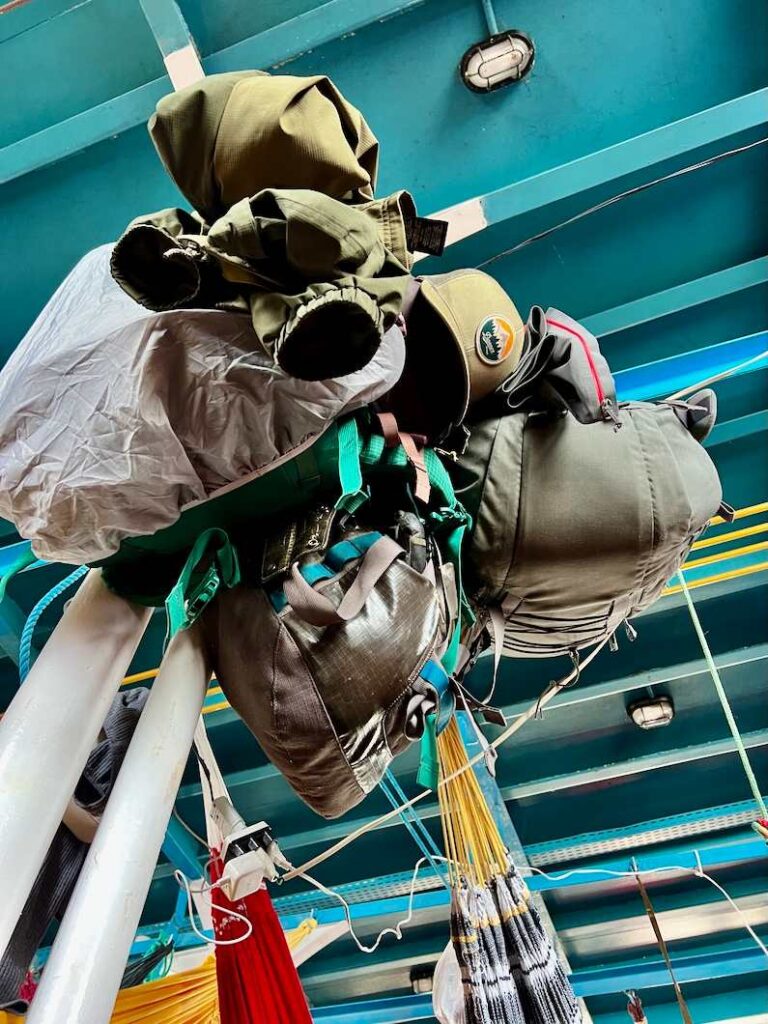
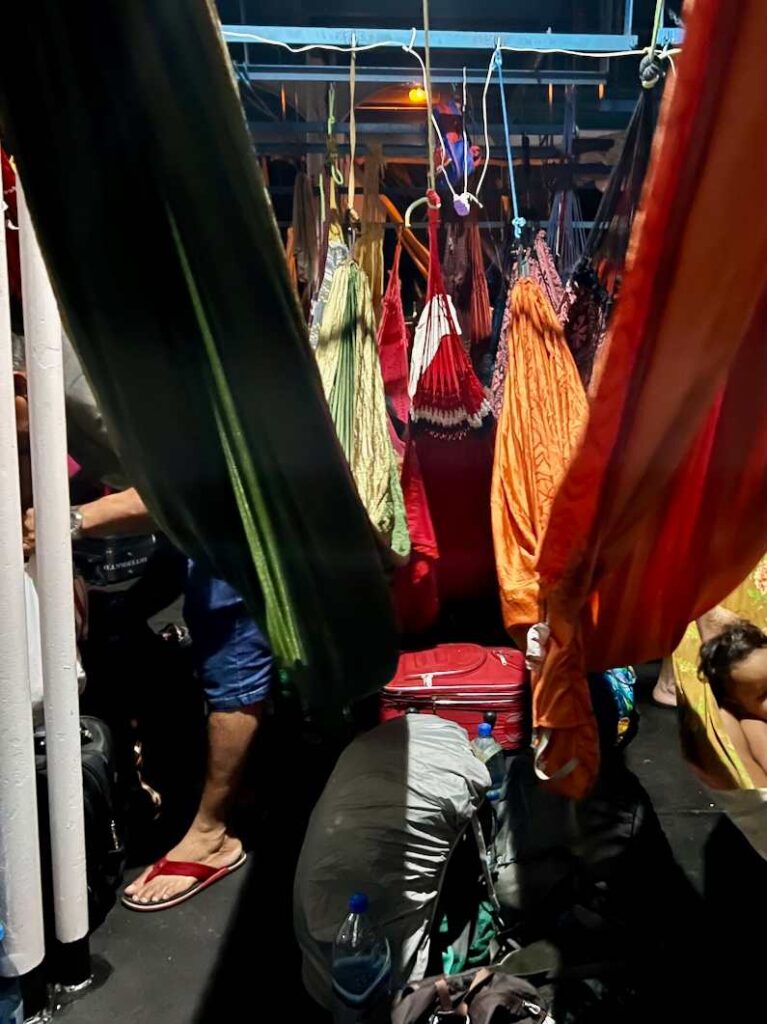
What to bring on the Amazon River ferry
In addition to whatever you are already traveling with on your Amazon adventure, you will want to bring these items specifically for the ferry.
- Hammock
- Rope
- Light sheet or towel for a blanket/pillow
- Hearty snacks
- Shower shoes
- Carabiners to hang bags/items
- Cash for food
- Phone charger or battery
- Book
- Headlamp
- Eye mask and ear plugs
For some passengers, it clearly wasn’t their first ferry. We saw families with George Foreman grills to make misto quente sandwiches, coolers for beverages, pressure cookers to make hearty meals, and extension cords with power strips for charging cell phones and tablets.
Ferry stops on the way to Santarem
Be prepared for your ferry to make a handful of port calls. Ours stopped at least four times at ports along the Amazon River. Passengers may only get off the ferry if it is their final destination.
If you need additional snacks, look for vendors selling food at each of the port calls.
Service and Wifi on the Ferry
We had intermittent cell service on the ferry. Wifi is available for purchase.
Book recommendations for the Amazon River ferry
I highly encourage visitors to the Brazilian or Peruvian Amazon to check out one of the following books before, during, or even after their trip.
This list of suggested Books for Travel to the Amazon has something for everyone.
Can only read one? My favorite is The Unconquered by Scott Wallace, quickly followed by River of Doubt by Candice Millard.
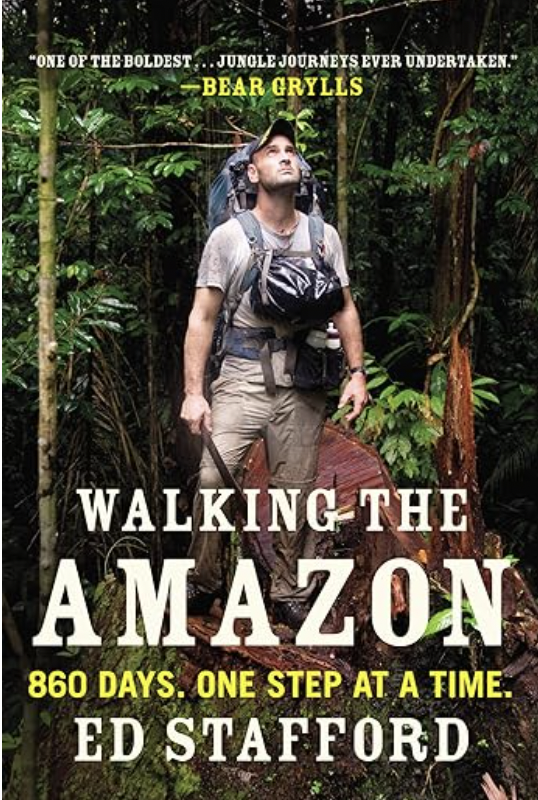

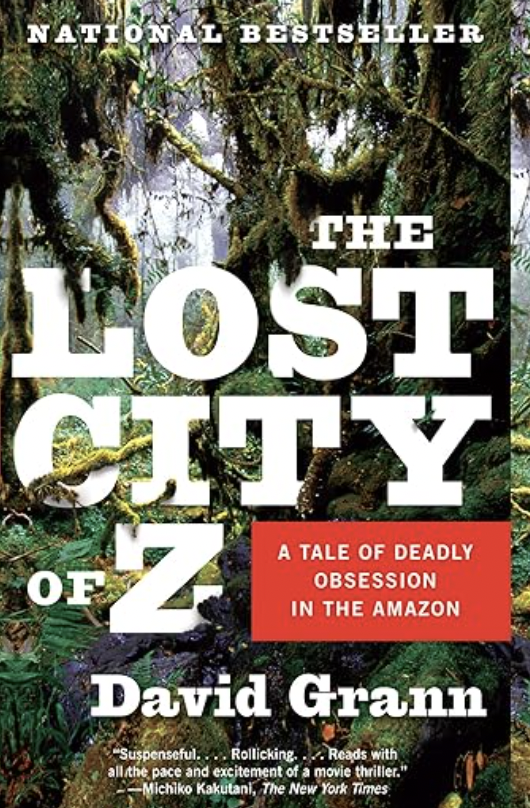
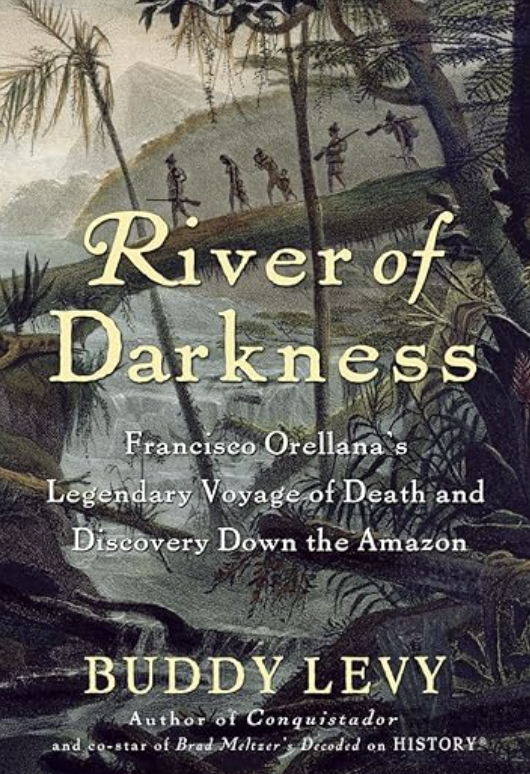


Final thoughts on the Amazon River ferry
Traveling down the Amazon River is a once-in-a-lifetime opportunity for many people. However, for 99% of the passengers on our ferry, this mode of transportation is their best option.
Flights may be prohibitively expensive and driving may take twice as long due to road conditions and geography.
So while this was just an adventurous aspect of our trip to the Amazon, the ferry is an important part of life for families living on the Amazon River.
Our 31-hour ferry experience from Manaus to Santarém was a small piece of our two-week itinerary to the Brazilian Amazon.
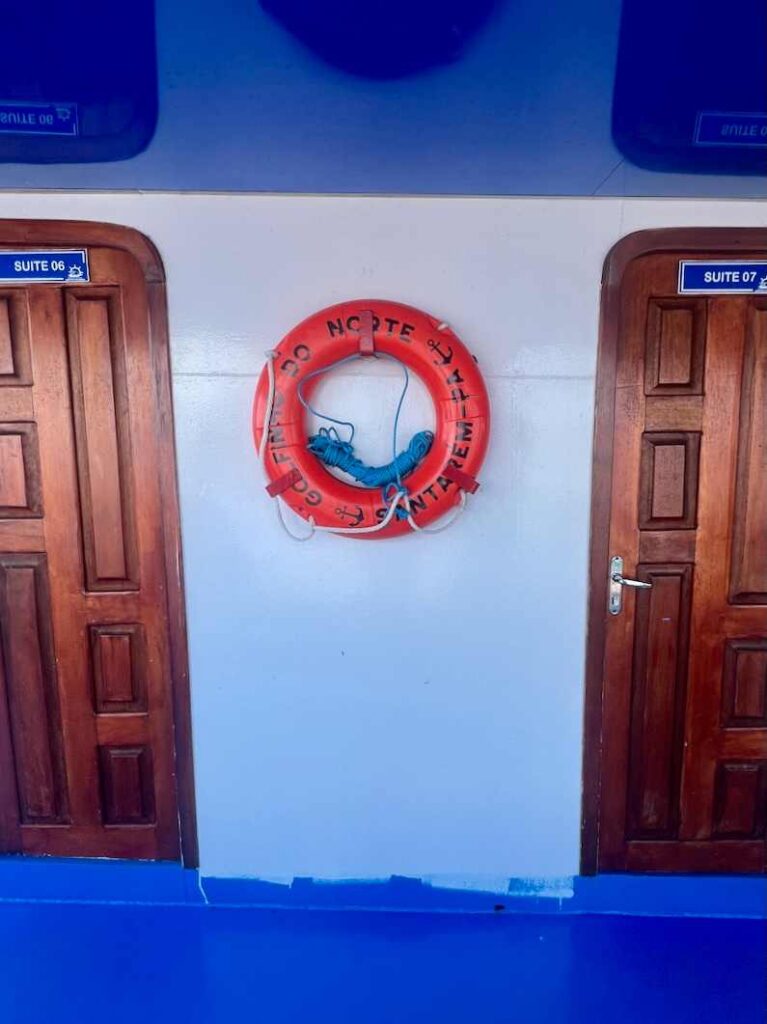
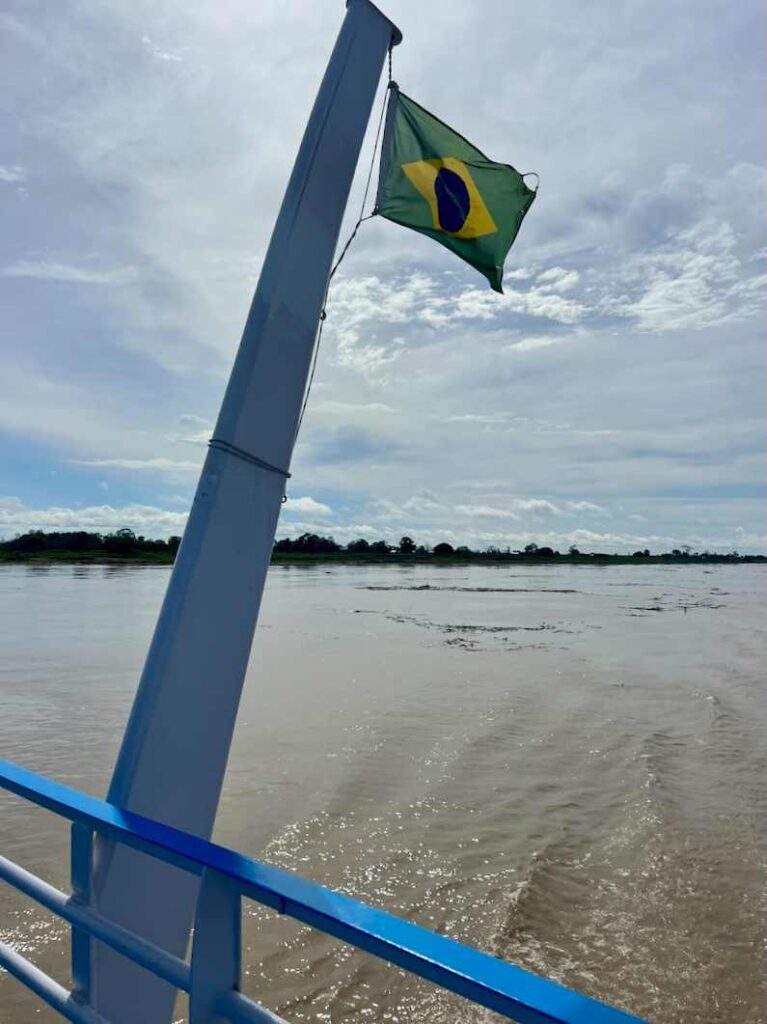
Spending time on the Amazon River was important to us but many of the cruises marketed to tourists are very expensive. Taking the ferry boat allowed us to still have this unforgettable experience of cruising down the immense Amazon River without sacrificing other trip resources.
Looking for more things to do in the Brazilian Amazon?
Stay in a remote river lodge like the rustic but cozy Dolphin Lodge on the Moramí River.
Bask in the clear blue waters of the Tapajós River near Alter do Chão.
Explore the Amazon River Delta city of Belém including its historic markets and nearby islands.
More places in Brazil to love

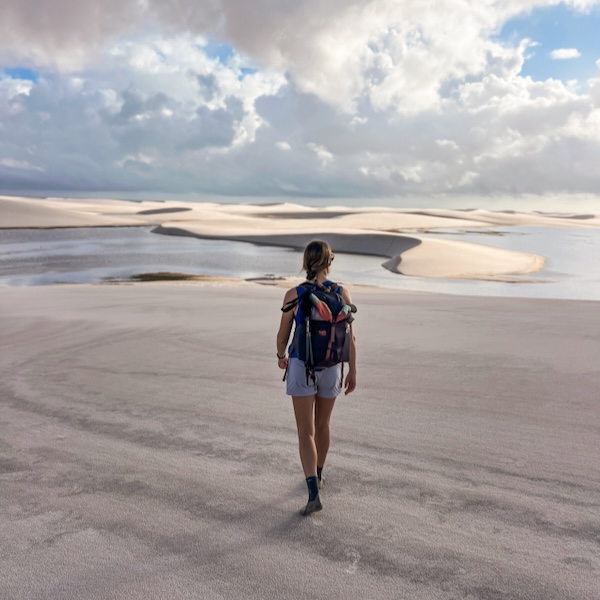
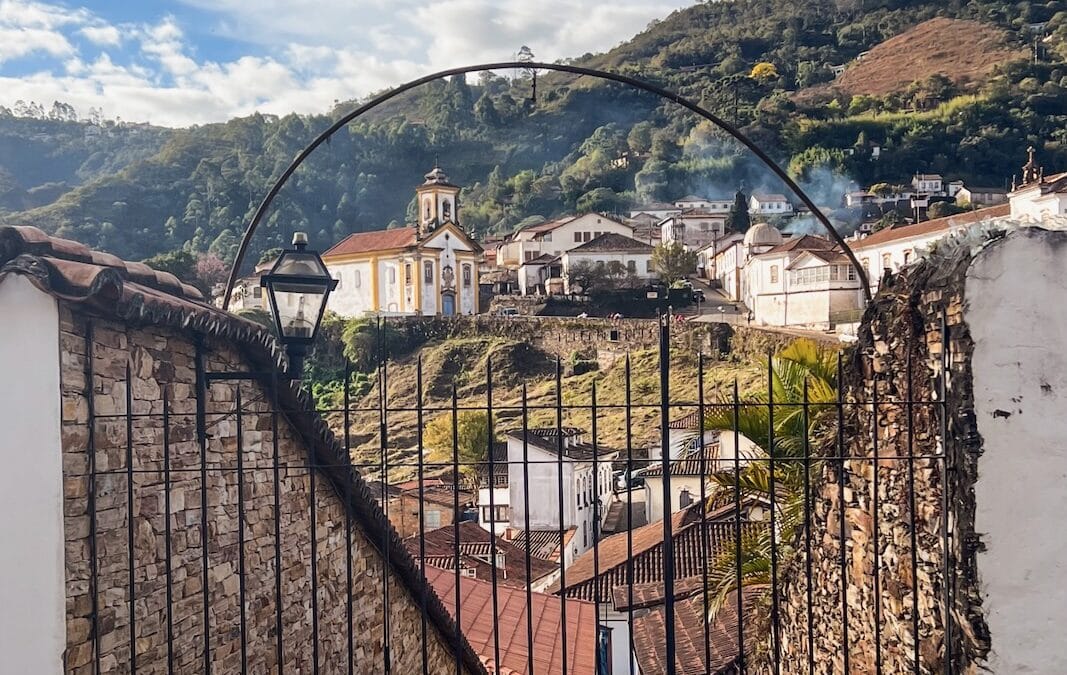
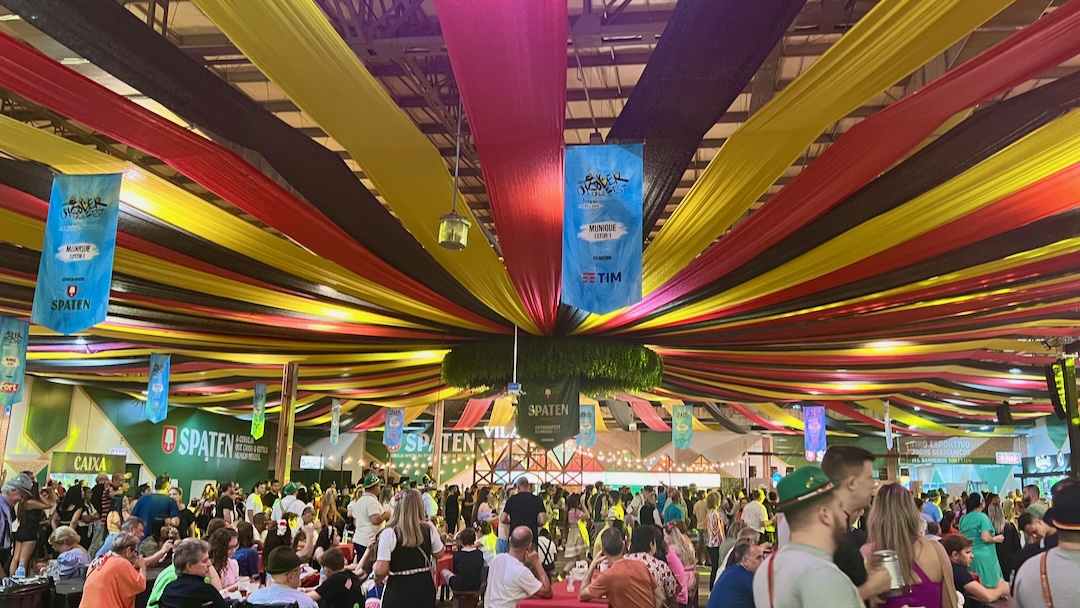
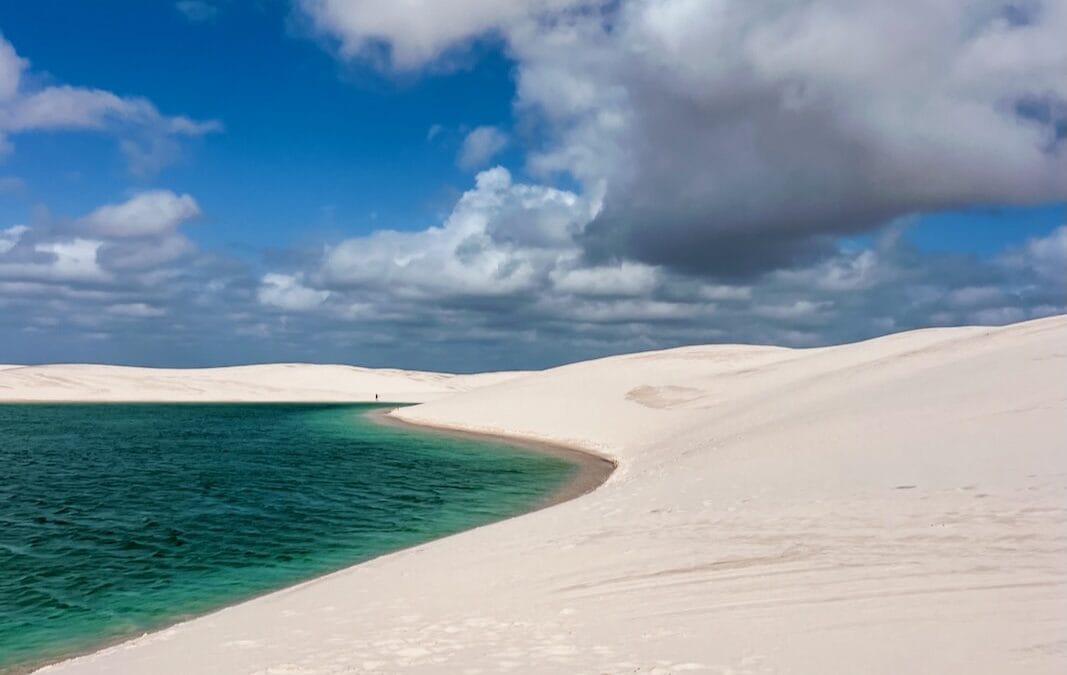
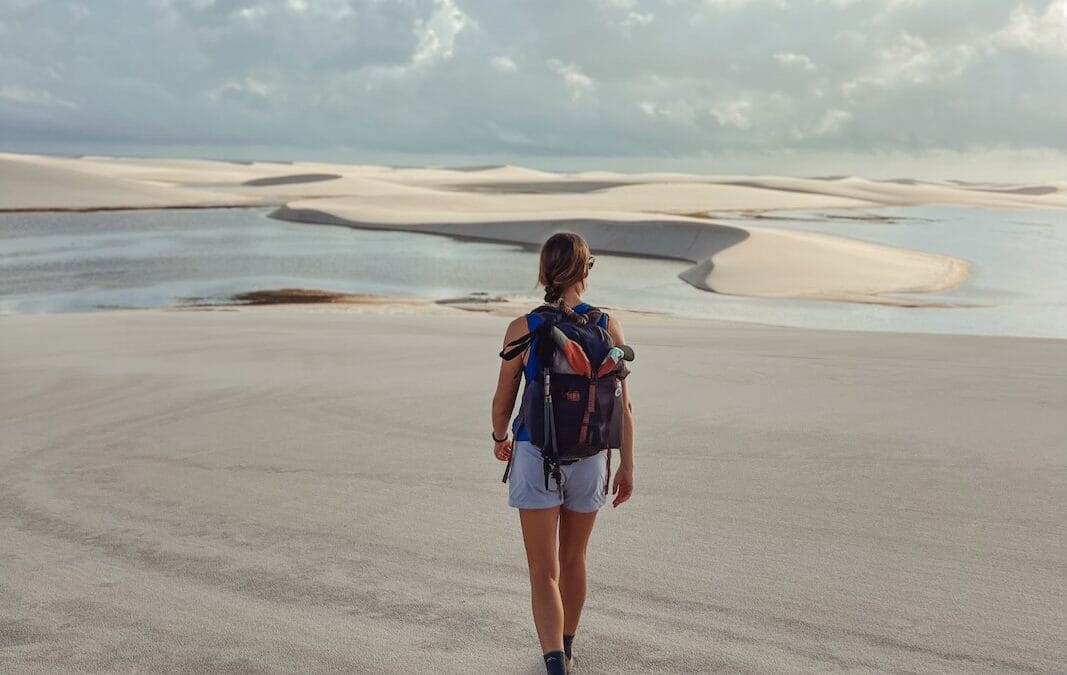
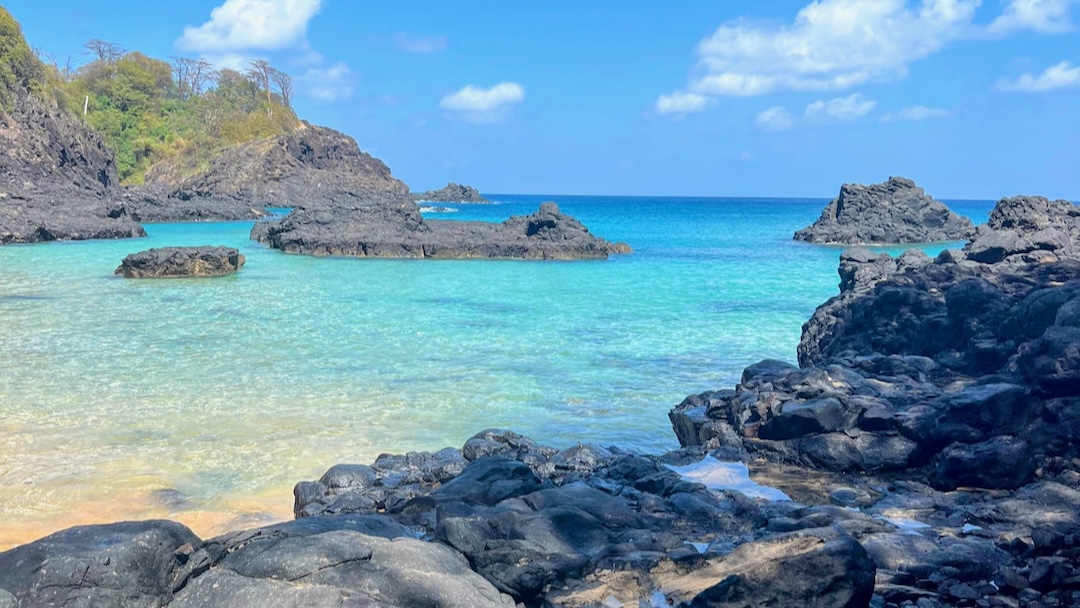
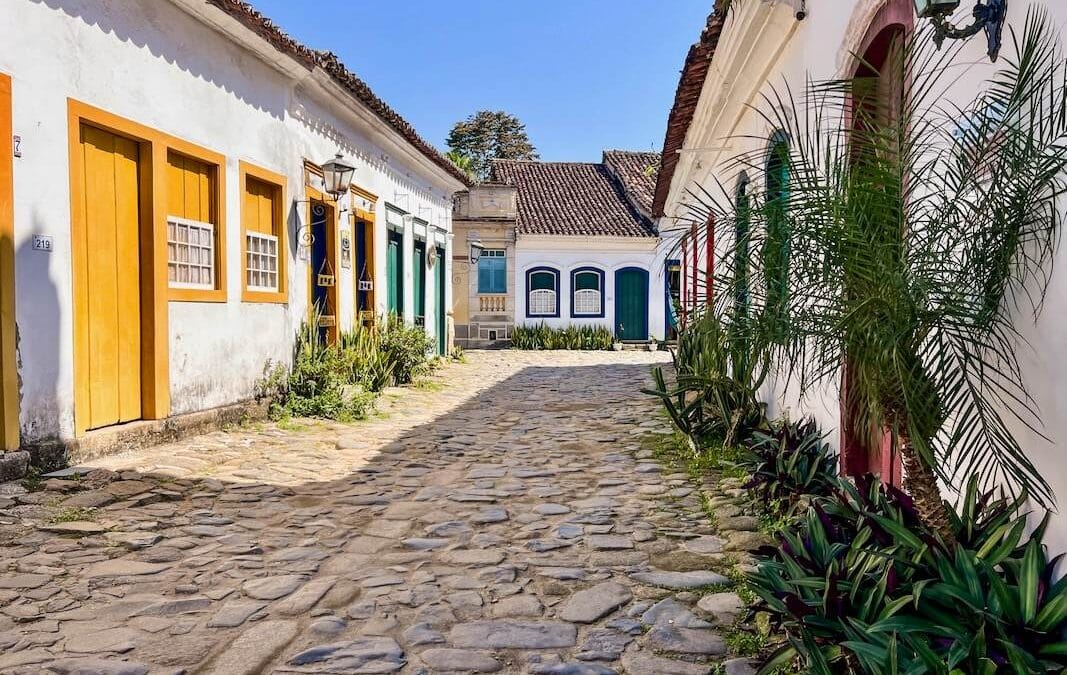
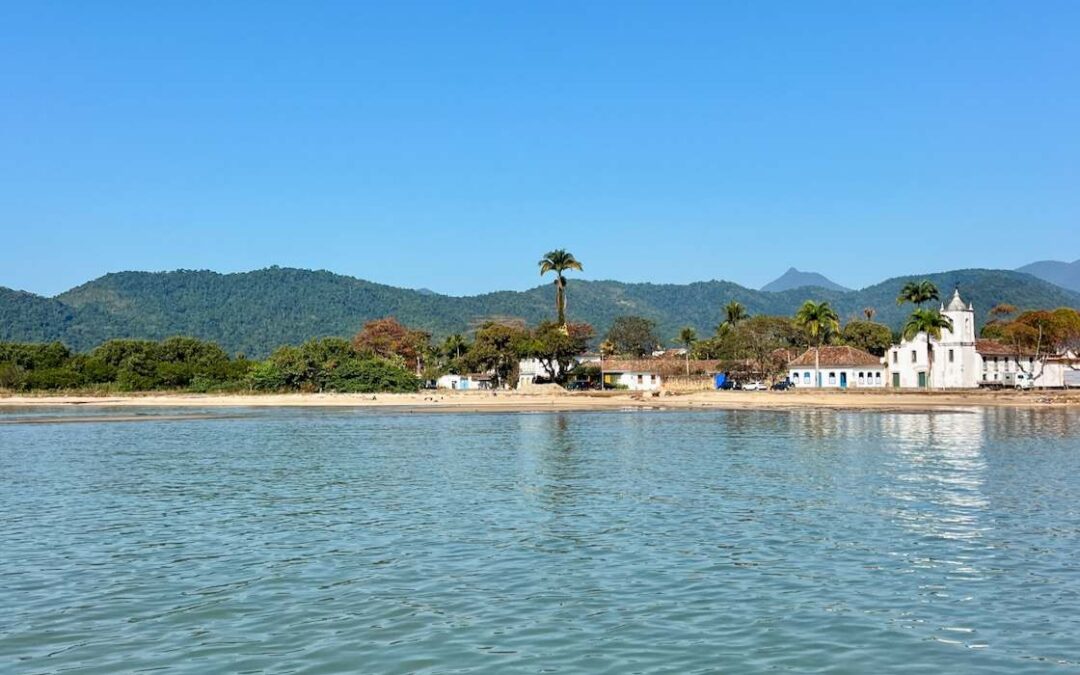
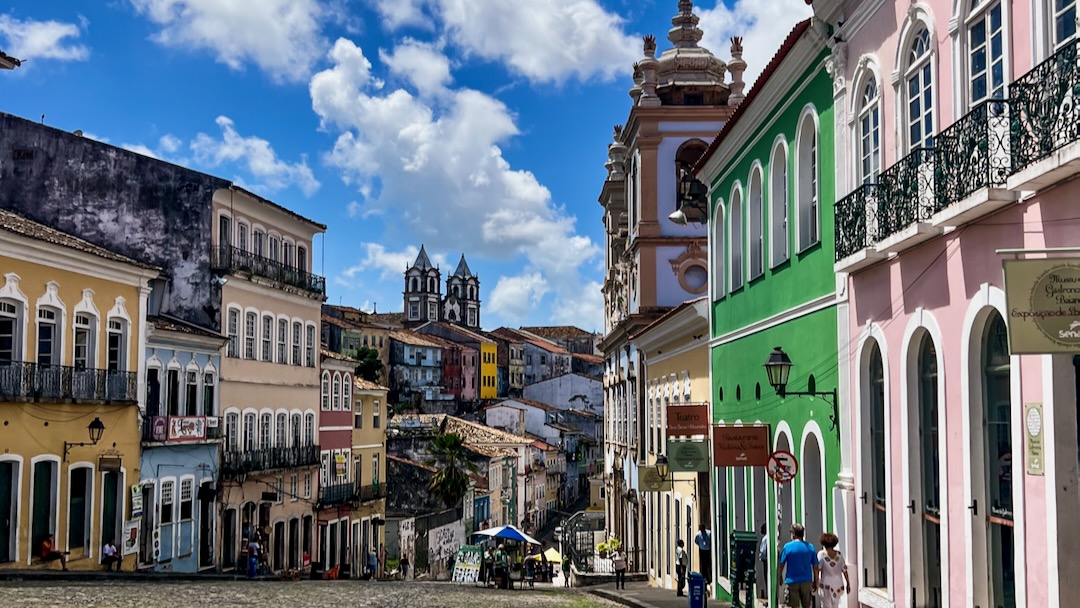
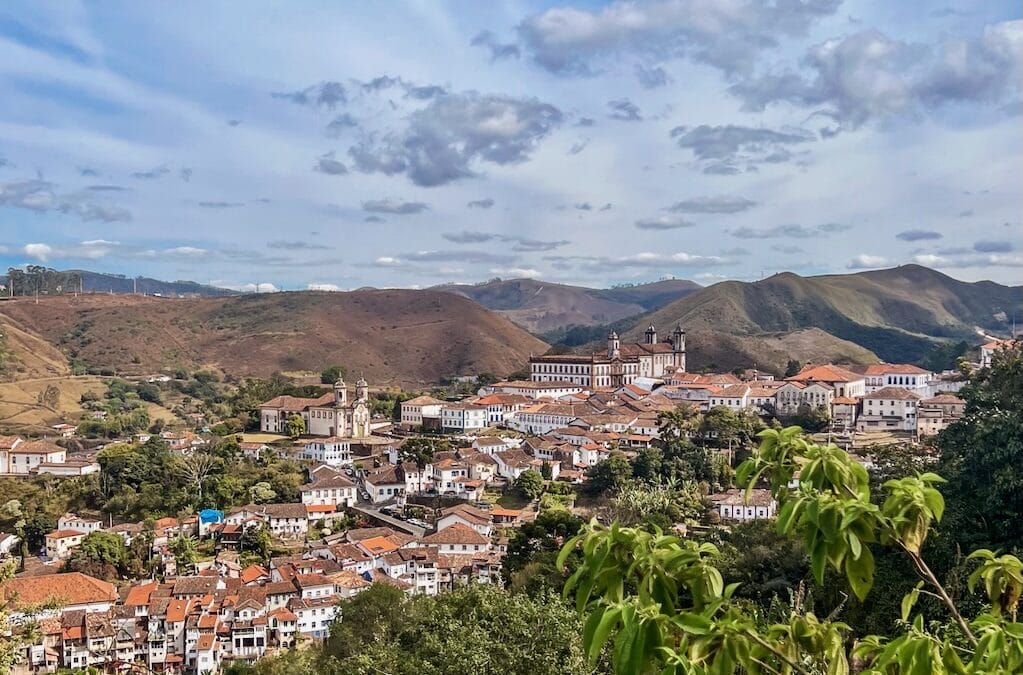
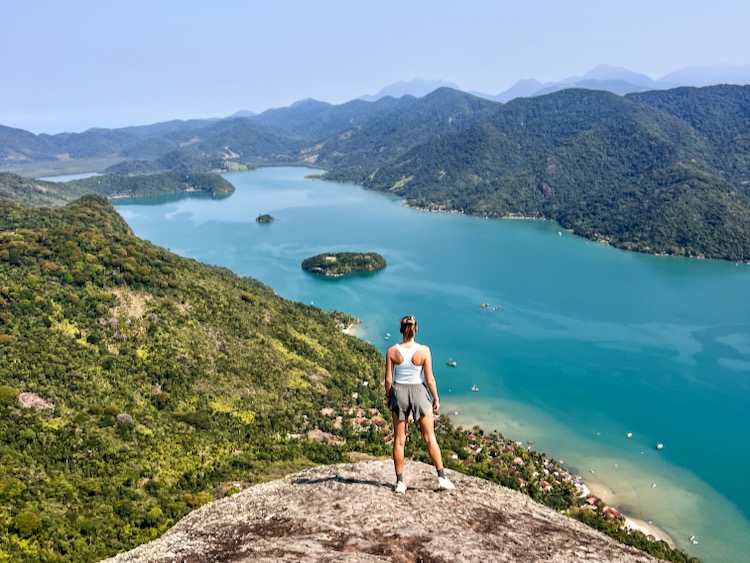
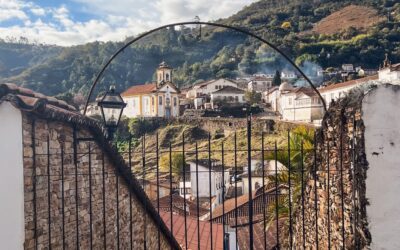
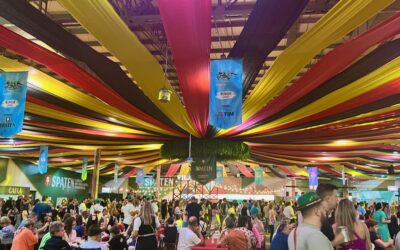
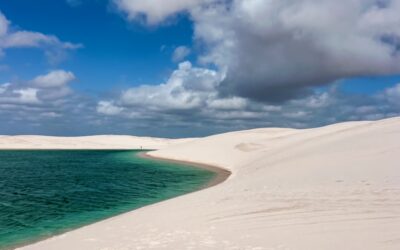
0 Comments